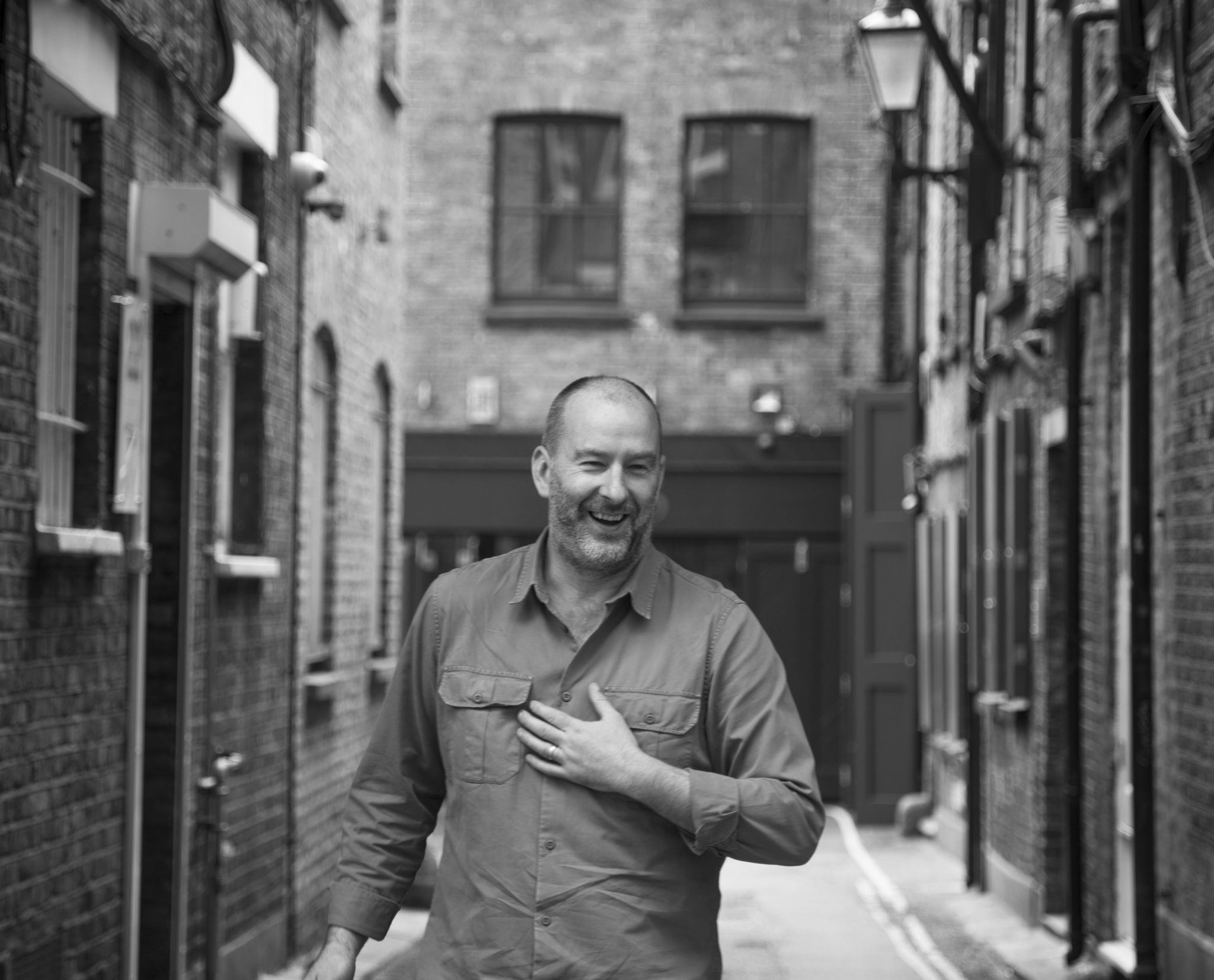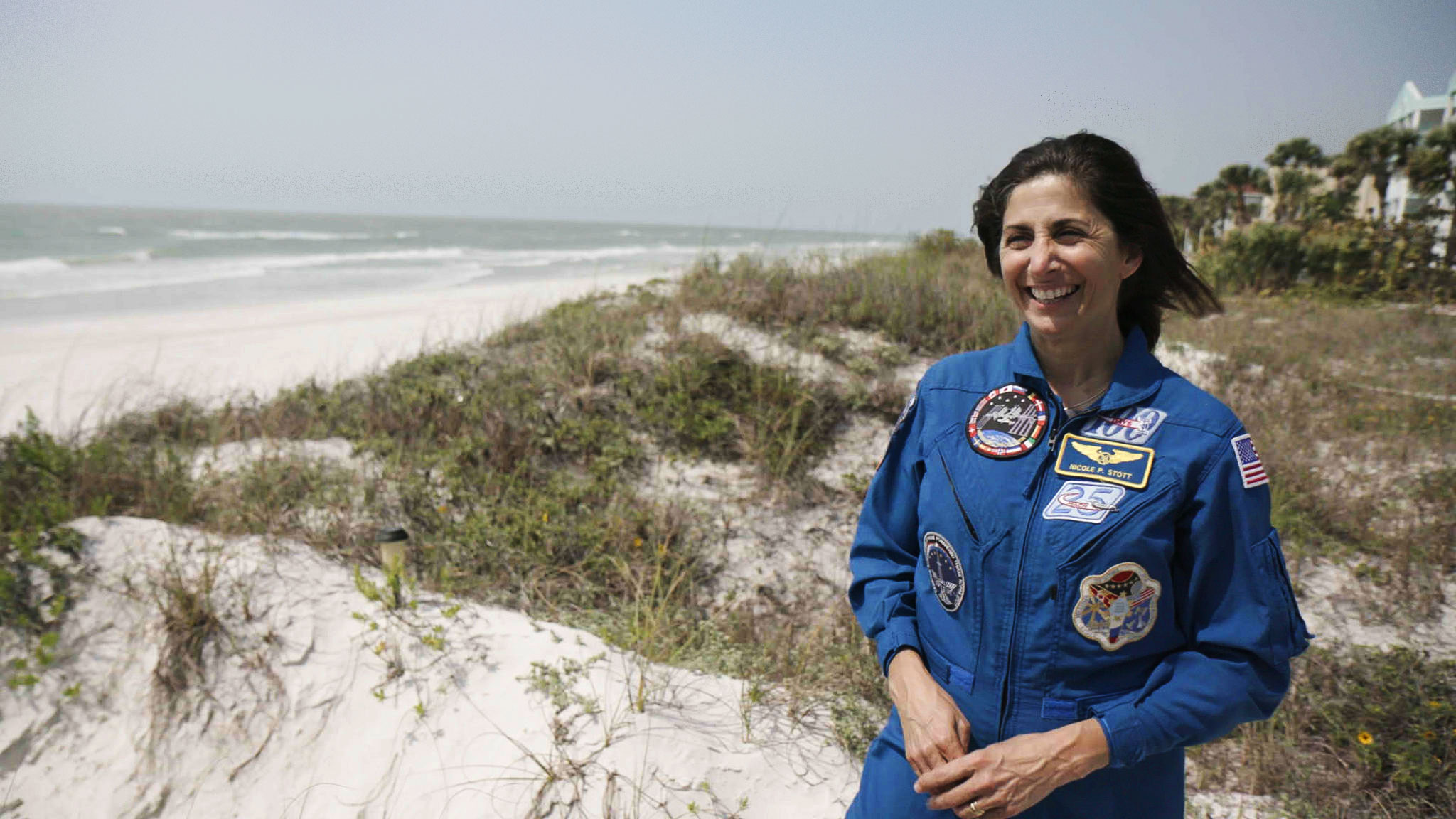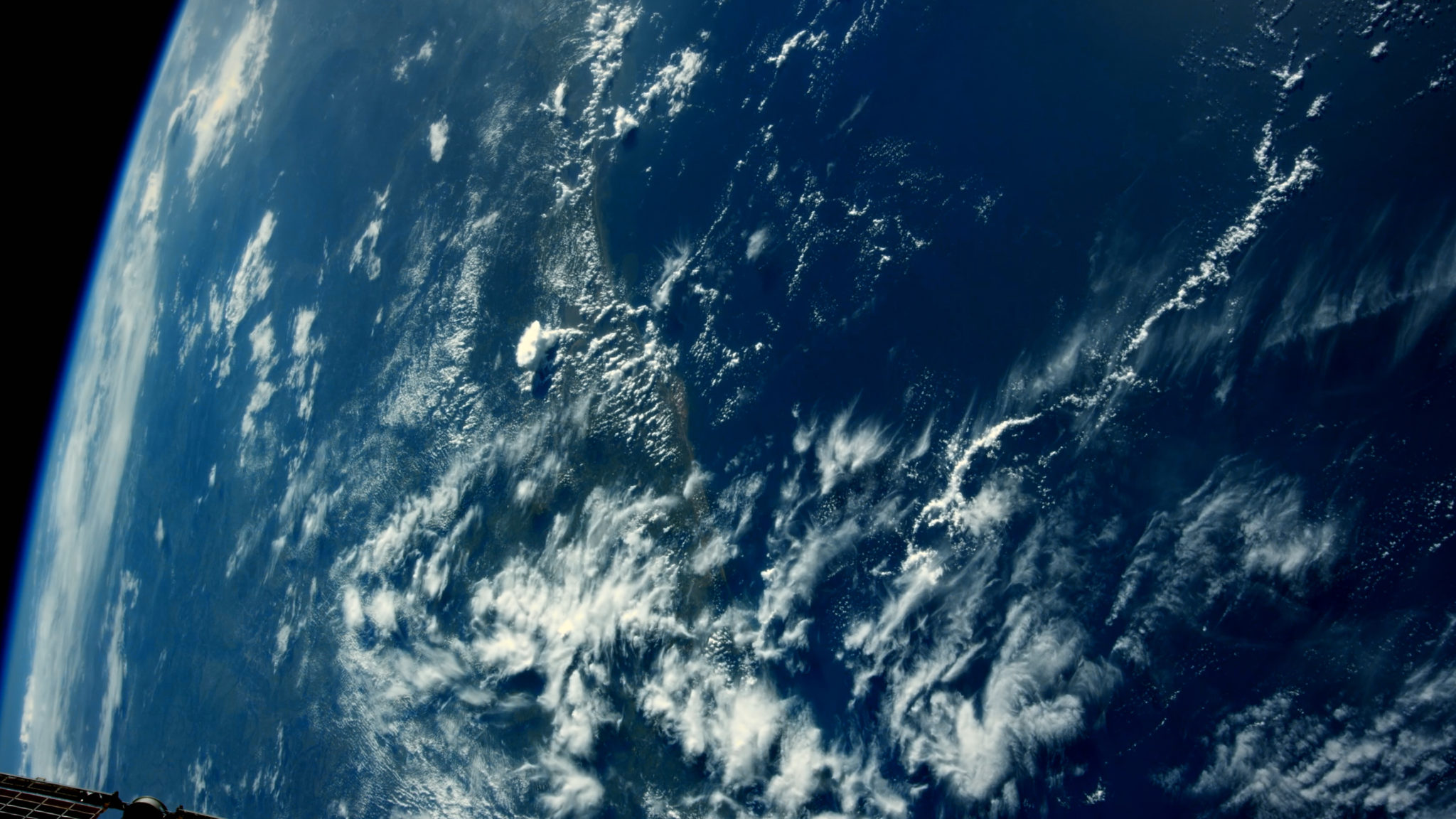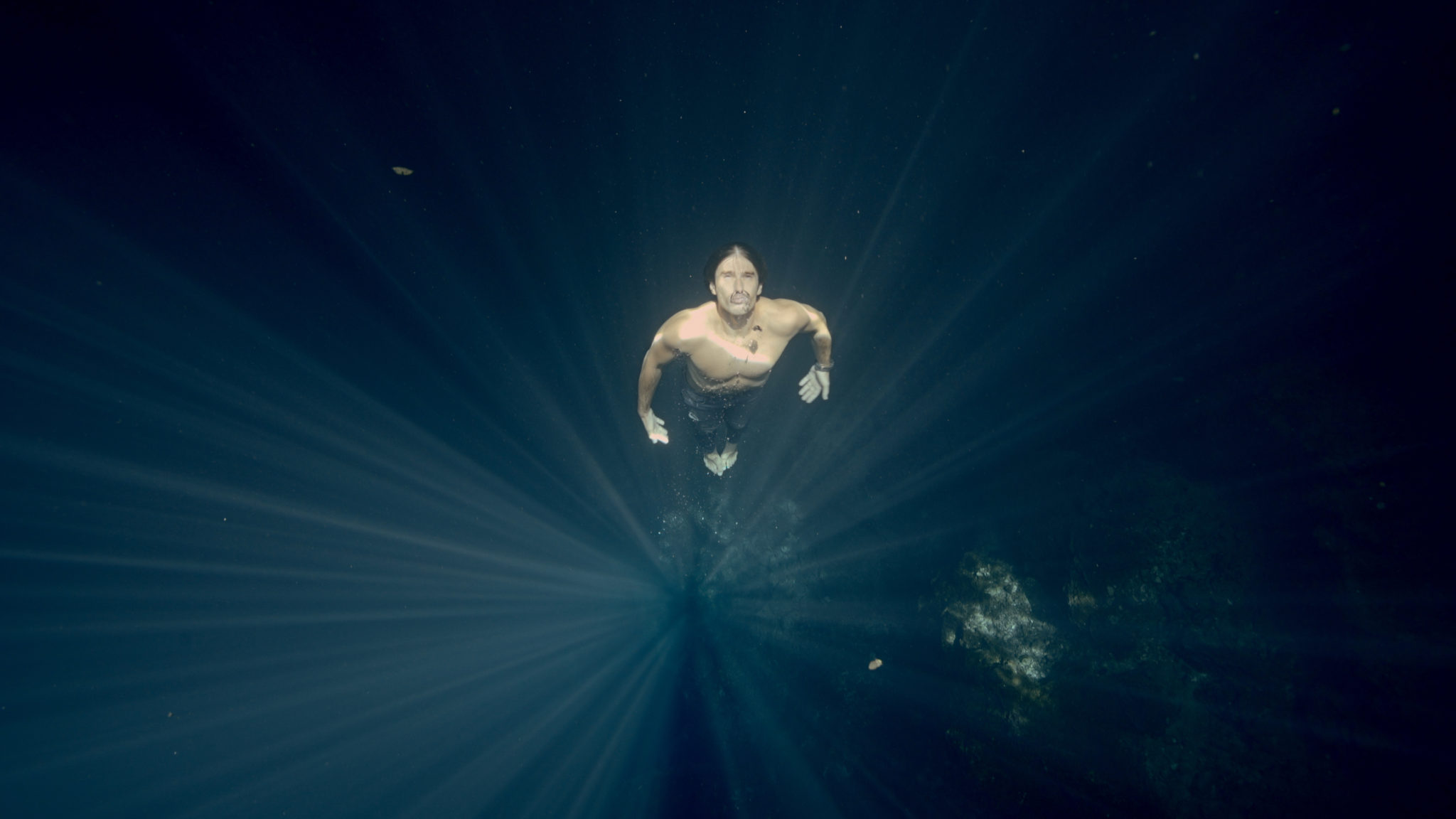
Most people don’t know that when director Darren Aronofsky was still in high school he went to Kenya and Alaska as an exchange student to train as a field biologist in environmentally sensitive areas. He’s a lifelong member of The Nature Conservancy, Greenpeace and the World Wildlife Fund and his most recent films, Noah and mother!, are in the director’s mind more about the dangers of human-wrought climate change than they are biblical retellings.
Ari Handel, Aronofsky’s producer at Protozoa Pictures, has a similar origin story: Before Requiem for a Dream, The Wrestler and Black Swan, Handel mapped the brains of rhesus macaque monkeys. “This project was really important to me and Ari,” Aronofsky told an audience after an episode screening in New York of his latest project, One Strange Rock, a cinematic science series on steroids about planet Earth. “Our company is called Protozoa, after all, and we have an underlying mission to remind us that science is cool, that it can give us a very valuable way to see the beauty and complexity of the world around us. This project is a celebration of the planet and how it came to be but the underlying subtext, during a time when science has become so politicized, is we don’t want to lose our home. We want to remind everyone how truly great, and fragile, this planet is.”
Narrated by Will Smith and focusing on the experiences of eight different astronauts with over 1,000 days in space between them, the series was led by Aronofsky, Handel and Jane Root and executive produced by Protozoa Pictures, National Geographic, where it originally aired, and Root’s “megadoc” production company, Nutopia (How We Got to Now, America: The Story of Us). The astronauts both elevate and ground the series with their personal stories and singular perspective, the so-called “overview effect” they gained in space reflecting back on the planet they left behind. “When you look out the window of the space station,” says featured astronaut Peggy Whitson in the final episode, “and you see the beautiful oceans and land masses and the thin layer of atmosphere that protects the Earth, it really gives you a sense of how special this place is where we live.” It’s a potential game-changer, and Aronofsky, Handel and Root want us all to take in that expansive view. “The one thing I noticed about myself after flying in space,” observes Chris Hadfield, the same astronaut who recorded this genius Bowie cover while stationed on the ISS, “was the difference between us and them completely disappeared.”
Graeme Dawson, the first editor brought on to the project, edited four of the series’ 10 episodes, including episode 2, “Storm.” We spoke with him about what Aronofsky wanted from editorial, the range of formats he and Envy Post wrangled, and how he fell just a little bit in love with Nicole Stott, the retired astronaut at the heart of “Storm.”
StudioDaily: How was the series pitched to you?
Graeme Dawson: Co-executive producer Arif Nurmohamed was acting as the show runner in London for Darren, Ari and Jane. I’d worked with Arif before and he contacted me quite early before he’d filled all the positions. He told me, “You know, you aren’t just a shoo-in because we know each other. This is a very ambitious project and I’m looking at loads of editors and many different types of editing styles.” Once we got talking about it, however, we realized we were coming from the same place and I understood the vision and what they wanted to do with the series.
Was Darren Aronofsky involved in each of the episodes?
Darren was our creative lead and he gave all of us an opportunity to be a little more creative than we might normally get away with on this type of science and nature programming. He’s a Hollywood visionary and, as such, he created this kind of creative shield we could hide behind if we needed it. Obviously with so many crews shooting in some 195 different locations in 45 different countries on six continents, Darren couldn’t shoot everything. It would have been his life’s work. And he obviously didn’t go up in space. But he created a rule book for the series to keep the various shots across the episodes connected and consistent, like how to use a drone, what lenses to use, how to follow a character, and so on, and also gave direction to the ISS photographer [Paolo Nespoli] who shot some of the newer space station footage.
How big was the editorial operation to deal with all that footage?
I think we had about eight Avid edit suites running, all on the latest version of Media Composer. We had a digital technician who was working through all the material as it was coming in from the different crews and formats, ingesting it and preparing it for us. It was almost too many different formats to deal with but pretty much anything and everything that the subject needed, from the macro lens stuff to expansive landscape shots, we were trying to use. There were shoots going out on boats in the North Atlantic, where one of the Phantom cameras got broken, unfortunately; there were shoots in the desert, across various bodies of water, in cities and small towns, and up in space. We also had borescopes for the tiny, detailed stuff, and of course we used a lot of NASA archival footage. Some of the archival footage that relates to each specific astronaut’s story is coming from much older sources and the earliest was maybe from the 1980s. We may have even had some VHS at some point. Our post facility where we edited, Envy, was fantastic and there was literally nothing that they couldn’t handle. Once we’d locked the film, we went through a process called Alchemist File that flattens out all the different formats and then reingests them into the Avid in a way that when we finally go to conform and online and into the grade, all the frame rates have been changed correctly and there aren’t any format problems through those final stages of post.

NASA astronaut Nicole Stott, seen here in her flight suit near her home in Florida, is one of eight former NASA astronauts who help narrate the series.
National Geographic
All that source footage must have also affected your edit schedule.
Yes, it did. Initially, we tried to put a first cut on the episodes in six to eight weeks, but pretty quickly we realized that the scale of the project was such that wasn’t nearly enough time. For “Storm,” episode 2, it ended up taking 20 weeks or more to cut 47 minutes. That’s quite a long time and also quite a luxury, but this is a very unique series. It may sound indulgent, but it’s not that long when you consider that each episode has several different storylines woven into it. “Storm” has seven, in fact, each coming from a different continent. Each story took about a week just to put a cut on before we started to review those cuts and make exchanges. Then, of course, Darren’s got to look closely at everything, as does Ari and so on.
When did Will Smith get added to the mix?
After we’d already been cutting the various episodes around a different astronaut. So it took a bit of time to work out exactly how Will would fit into the series and what his role was. One of the real joys of One Strange Rock, actually, was the fact that National Geographic’s VP of Production Matt Renner, a two-time Emmy-winning producer (Deadliest Catch, LA 92), was brave enough to put the series in motion before all the pieces were in place, and we began cutting without the safety net of a voiceover. It was really liberating, in fact, because it just meant that we had to find different ways to tell the story. When we realized that what we needed and wanted was this host figure that Will became, we knew we weren’t just going to use him as a kind of easy in-and-out device to solve narrative problems. We thought, no, Will’s job is actually to be like a buddy and familiar guide, so when the science gets tricky and a bit complicated, Will can pop up and just settle everyone down with a quick comment or two to emphasize something and contextualize things.
Did you work with temp tracks or directly with the composer?
In the beginning we were using temp tracks. We were careful not to fall into the familiar tropes of big, sweeping orchestral music, so we tried to keep things a bit more electronic but overall just more thoughtful to the scene. Our composer, Daniel Pemberton, who has created scores for television but also film scores for the likes of Ridley Scott and Guy Ritchie, did a beautiful job. With 10 episodes with lots of sequences in each one, he had to create lots and lots of music. Daniel and his team would come in and we’d sit and talk about and watch the scenes. We were using some newly scored temp tracks, too, without getting too wedded to anything, which is a dangerous thing to do. As an example, there was one sequence in “Storm” of these young boys in India having this epic water fight with water balloons and water pistols. It was originally conceived by that episode’s director, Nat Sharman, as a sort of Bugsy Malone-style situation where the kids and the water toys took the place of grown-ups and real guns. It was helping us tell the story of the earth’s bombardment where, instead of being destroyed, our planet received oceans of water from icy comets colliding with it. They had wanted to style it as a gangster film-inspired sequence but, due to scheduling, ended up shooting it on the streets of India, where it morphed into a kind of Bollywood sequence. So trying to work out what kind of music to pair it with was quite challenging. But we found a way, and the score gives that sequence a thriller-like edge I think, capped with a sweet coda (of a wise old man dousing the boys with a super soaker as they erupt in laughter).

These images of oxygen bubbles forming from oxygen-producing algae took several days to set up and capture. Executive Producer Jane Root believes it was the first time this process has ever been filmed.
National Geographic
Which of the episodes was your favorite to edit and why?
I really loved the second episode, “Storm,” mainly because of Nicole Stott, who retired as an astronaut in 2015. Just from the very first day in the edit suite I realized, my god, this is one impressive woman. She’s smart, fearless, and blessed with a charm that leapt off the screen. I actually went through all of the NASA archive material of Nicole before I began a single edit. I got to know her as I watched her working up in space and floating through the ISS. There’s one moment in particular that grabbed me, when she’s walking out onto the rocket to get boosted up into the sky and she turns to the camera and mimes, “I love you” to her family. I knew then we were in safe hands, that she could really communicate. After that, I found all of her footage very easy to work with, and that part of the edit went very smoothly indeed. When you watch everything she’s done, you really fall just a little bit in love with her.
Were there any specific technical or creative challenges along the way?
Envy is so experienced and they coped admirably with all that was thrown at them during the course of the series. We had a team of producers at Envy that were looking after us all the way through. There were very few bumps in the road technically, which was surprising, given the incredible scale of the project. The Alchemist File process was a big part of smoothing away any potential trouble points later on in post. It really helped all of us. Creatively, part of the challenge was to make science accessible to as many people as we can but never dumb it down so that you were speaking down to the audience. And not having that voiceover meant that with Nicole’s episode, we could build the narrative from what she said and how she was interviewed. But that was a real benefit because it meant the stories felt very organic and the way we told the stories was quite organic.
The series also includes an ambitious amount of visual effects. Did you have a lot of VFX shots in your episodes?
We had loads of visual effects in “Storm,” because the episode is all about how the earth, and its moon, were made by mighty collisions. We spent quite a lot of money of VFX for that episode and probably had more than some of the other episodes, but we really needed it. We worked with the team at Framestore here in London. I mean, they did Gravity and Bladerunner 2049, so you knew their images would be extraordinary, and they were.

A US Air Force fighter jet pilot prepares to rendezvous with the solar eclipse in August 2017. The scene appears in Episode 4.
National Geographic
What was Aronofsky’s guiding principle for blending it with the live-action footage?
To make it all connected and related to the story, and as cinematic as possible; that was Darren’s m.o. for every single sequence, whether live action or not. To this end, there were times when Darren would get totally forensic. There was one instance, in the opening of “Storm,” where we see Will Smith training in a boxing sequence, and the only note I got from Darren was, “I just think we need a few more frames as he drops his jump rope on the front of the shot.” Sometimes, there would be massive notes with a larger point, like “We’ve got to tell this story globally.” He wanted all of it in there without favoring any one location. In “Storm” we had shoots in North Africa, South Africa, the Arctic Circle, India, Europe, the U.S. and Switzerland and he was very determined that we didn’t dwell in any one place for too long. There’s another important point I’d like to add about Darren’s vision for this show. Although this guy is a very distinctive filmmaker, whether you love or loathe his work, he certainly provokes a reaction. But another thing he made clear from the start was he didn’t want others just to ape his style. He didn’t want us to try to be Darren Aronofsky and smash-cut our way through this. Of course he wanted us all to perfect his cinematic sensibilities but he didn’t want us just to pretend to be him. Whenever anyone strayed into straight-on mimicry he was all over it and immediately shut it down. What he wanted was for us to bring what we had individually to the table.
You also worked pretty closely with NASA to source archival footage. Was it difficult finding exactly what you wanted?
All I can say about NASA is: what a hugely impressive organization. NASA did everything we asked for and was so obliging at every turn, particularly when we sought out older material and we wanted to make sure we got the very best quality versions of images. What’s so incredible about NASA is we could literally throw anything at them and within 24 hours we’d have it back, that obscure piece of material from 1986 we weren’t sure they could find. But this is the way NASA has always been: they catalog and optimize images so superbly as part of their mission, to put those images out there for everyone to look at and use. They are very, very open with that sort of thing. There’s a shot of Nicole floating through the ISS where she’s kind of doing a video diary selfie and we loved it, but when we first had it it was embedded in another piece of video, a picture-in-picture. We knew we had to get the original clip. A day later, NASA delivered it to us. It was brilliant.
What most surprised you about working on this series?
Putting together Darren and Ari’s Protozoa Pictures with Nutopia, Jane’s production company, meant the scale and sheer ambition of the project was massive. But what was fantastic, and this is where Darren really came into his own, was the creative teams that were actually sitting looking at days and weeks worth of footage were left to get on with it and left to find the story. It was a really awesome thing to be involved in at pretty much every level.
Will there be another season?
Well, there are rumors of a second series, which is probably all I can say at the moment. But certainly, in terms of the stories of the astronauts, there is so much more that we could mine. We’ve only just gotten to know these men and women, and they are such impressive people with such extraordinary experiences and extraordinary views on the world that mere mortals like us have clearly never experienced. We’ve only just scratched the surface with them; there’s so much more for them to give and teach us.
Crafts: Editing
Sections: Creativity
Topics: Project/Case study Alchemist File avid media composer Envy Post national geographic Nutopia Protozoa Pictures
Did you enjoy this article? Sign up to receive the StudioDaily Fix eletter containing the latest stories, including news, videos, interviews, reviews and more.











